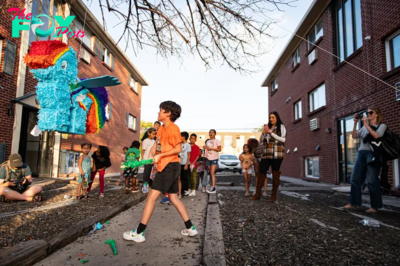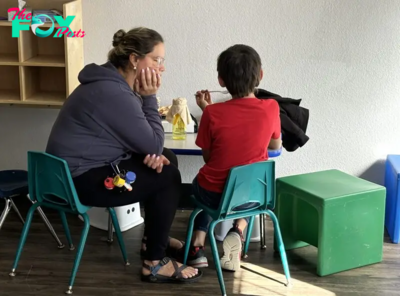Education
Colorado panel finalizes budget plan that boosts K-12, higher education and health care. Here’s what’s in it.
Colorado’s state budget panel early Friday morning approved a spending plan for next fiscal year that would invest heavily in state workers and medical services, eliminate Colorado’s K-12 funding shortfall and limit college tuition increases to 3% for in-state students.
But it took a lot of cutting — and some creative accounting maneuvers — to get there.
Facing a potential $170 million shortfall at the start of the week, lawmakers on the Joint Budget Committee dipped deeply into various state cash funds in order to balance the budget, pulling money out of a number of programs to cover the spending gap.
The JBC also rejected a number of Gov. Jared Polis’ proposals to expand social services, workforce housing and public safety programs in order to redirect money to their own priorities. Chief among them were Medicaid providers and higher education, two areas lawmakers insisted had been underfunded for far too long.
The six-member budget panel backed a $132 million increase for higher education, which they said would be enough for colleges and universities to limit tuition increases to 3% for Colorado residents and 4% for out-of-state students. Amid widespread nursing shortages, health care providers would receive an across-the-board 2% increase to the state’s Medicaid reimbursement rate, down from the 2.5% bump the committee had previously approved. Lawmakers also approved a number of large targeted increases for some specialties.
State workers would get 3% across-the-board raises under the proposal, plus additional pay bumps as government agencies implement a new pay plan under the state’s collective bargaining agreement.
The proposed 2024-25 spending plan, which would take effect July 1, now moves to the Colorado House, where it could be debated next week.
For months, Polis and top lawmakers had been warning that the state would face a tight budget year as federal stimulus funding runs out and economic growth slows. But state revenue forecasts released in March left the Joint Budget Committee with even less money to spend than expected.
That set off an eleventh hour scramble this week to close the $170 million spending gap in order to balance the budget without depleting the state’s $2.2 billion general fund reserve.
“I feel good about it,” JBC chair Shannon Bird, a Westminster Democrat, told The Colorado Sun after the budget was completed around 2 a.m. Through the budget balancing maneuvers, she said, “we made sure we actually grew the amount of money available to implement important programs for our constituents.”
☀️ READ MORE
Volunteers scramble to help migrant families left without shelter as Denver scales back services
Colorado Medicaid problems still rampant as state agency tries to address computer, structure issues
Outdoor gear sales dropped in 2023, leaving mountain retailers struggling with high rents, high taxes and too-few workers
The budget is still subject to change; the spending plan must pass the House and Senate before Polis can sign it into law.
Here’s some of what made it into the proposed spending plan — and what didn’t:
General fund spending will increase by over $1B
The JBC opted to use the economic forecast from the governor’s Office of State Planning and Budgeting for the second year in a row as the foundation of the budget.
The decision gave lawmakers an extra $54 million to spend over the Colorado Legislative Council Staff forecast — arguably a departure from the JBC’s typical practice, which is to adopt the more conservative of the estimates to avoid midyear budget cuts.
The total size of the budget won’t be known until JBC staff analysts complete their calculations and lawmakers introduce the long bill on Monday. But early figures show general fund spending increasing to more than $16 billion from $15.2 billion, even as tax collections are relatively flat.
General fund revenue, which is primarily made up of income and sales taxes, has grown slower than inflation in recent years after booming growth during the coronavirus pandemic. General tax collections are expected to drop 0.7% this budget year to $17.3 billion, before increasing 1.7% in the 2024-25 fiscal year to $17.5 billion.
Nonetheless, the state will be able to spend more next year due to 5.8% growth in the state’s revenue cap. Under the Taxpayer’s Bill of Rights, state revenue can only increase based on the combined rate of iNFLation and population growth. Anything beyond that must be refunded to state taxpayers in the following year.
The state will issue $3.6 billion in TABOR refunds this spring, and expects to have a $2 billion TABOR surplus in the current budget year. The surplus is expected to shrink to $1.3 billion in 2024-25, under the proposed budget.
Property taxes, cash stockpiles fuel education spending
One of the linchpins of the budget was a tax the state doesn’t even collect.
-

 Education9m ago
Education9m agoWhat would it mean if President-elect Trump dismantled the US Department of Education?
-

 Education2d ago
Education2d agoPhiladelphia students have a new reading and writing curriculum − a literacy expert explains what’s changing
-

 Education2d ago
Education2d agoWhy school police officers may not be the most effective way to prevent violence
-

 Education5d ago
Education5d agoCampus diversity is becoming difficult to measure as students keep their race and ethnicity hidden on college applications
-

 Education6d ago
Education6d agoFederal judge rules that Louisiana shalt not require public schools to post the Ten Commandments
-

 Education6d ago
Education6d agoCampuses are ground zero in debates about antisemitism − but that’s been true for 100 years
-

 Education1w ago
Education1w agoSocioeconomic status explains most of the racial and ethnic achievement gaps in elementary school
-

 Education1w ago
Education1w agoMothers, metaphors and dyslexia: What language reveals about the challenges of a child’s learning disability



























